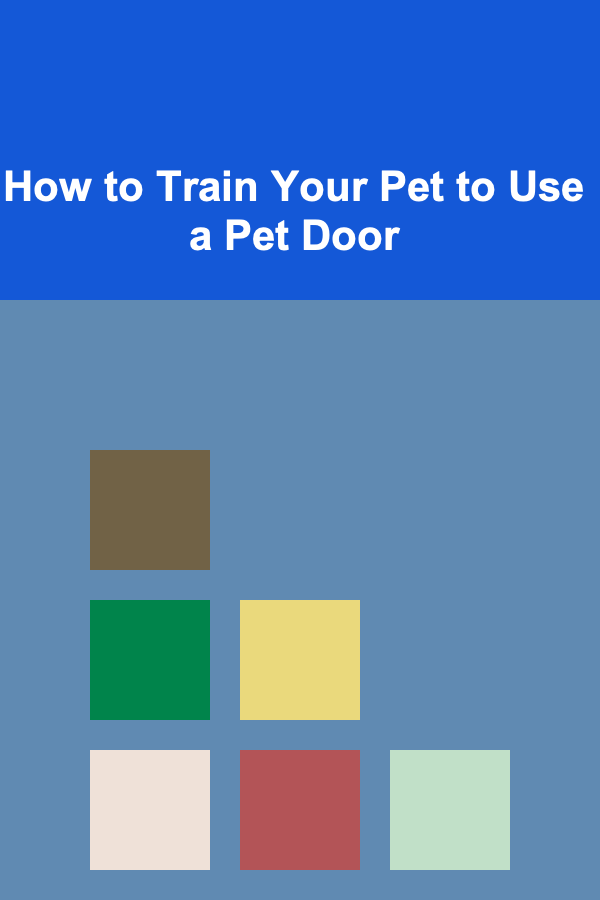
How to Sell Digital Products Successfully For Graphic Designers
ebook include PDF & Audio bundle (Micro Guide)
$12.99$6.99
Limited Time Offer! Order within the next:

Selling digital products as a graphic designer can be an incredibly profitable venture. With the rise of online marketplaces, social media, and the ever-growing demand for digital design resources, graphic designers have a unique opportunity to monetize their skills. Whether you're selling templates, fonts, illustrations, or design tools, there's a wide audience eager to buy digital products that can help them enhance their projects.
In this actionable guide, we'll walk through the steps graphic designers can take to sell digital products successfully. From identifying the right products to creating effective marketing strategies, we'll cover everything you need to know to turn your digital designs into a profitable business.
Step 1: Choose the Right Digital Products to Sell
The first step in selling digital products is choosing the right products to offer. As a graphic designer, you likely have a wide array of skills, so it's important to focus on products that align with both your expertise and what your audience is looking for. Here are some popular digital products you can sell:
1.1. Design Templates
Templates are one of the most popular types of digital products. They can range from:
- Website Templates: These can include WordPress themes, HTML templates, or landing page templates.
- Social Media Templates: Instagram posts, stories, and Facebook ads designed to help businesses improve their social media presence.
- Presentation Templates: PowerPoint or Google Slides templates that are designed to help professionals create engaging presentations quickly.
- Printable Templates: Wedding invitations, planners, calendars, and stationery designs that customers can print at home.
1.2. Fonts and Typography
Fonts are highly sought after, especially unique, custom fonts that have a distinct personality. As a designer, creating a font family or a handwritten typeface can be a valuable product that allows other designers and content creators to elevate their work.
1.3. Digital Illustrations
If you're skilled in drawing, selling digital illustrations such as icons, character designs, backgrounds, or vector art can be a lucrative market. These assets are used by businesses, marketers, bloggers, and even other designers who need them for their projects.
1.4. Mockups and Branding Kits
Mockups for packaging, apparel, stationery, or branding kits (logos, color palettes, fonts, and styles) are often needed by businesses looking to brand their products. Creating ready-made, customizable mockups or kits can save your clients time while providing you with a profitable product to sell.
1.5. Design Assets and Brushes
If you use software like Adobe Photoshop or Illustrator, creating design assets like brushes, textures, patterns, or 3D assets can appeal to other designers who are looking to speed up their creative processes.
1.6. E-books and Online Courses
If you have extensive knowledge of a specific design topic or software (like Adobe Illustrator or web design principles), you could create e-books or online courses to teach others how to design effectively. Selling educational materials can be highly profitable, especially if your niche is in high demand.
1.7. Stock Photos and Videos
High-quality, original stock photos and videos are valuable assets for designers and businesses alike. If you have photography or videography skills, selling your work as stock content can be an excellent way to generate passive income.
Step 2: Understand Your Target Audience
Once you've chosen your digital products, it's time to understand your target audience. Successful digital product sales are rooted in understanding who your potential customers are, what they need, and how you can solve their problems. Here's how to define your audience:
2.1. Identify Your Ideal Customer
Who is most likely to buy your products? Potential customers could include:
- Other graphic designers: They may need tools and resources like fonts, brushes, and templates.
- Small businesses and entrepreneurs: They often need branding kits, logo templates, social media assets, and website templates.
- Content creators: Bloggers, YouTubers, and influencers may be interested in social media templates, presentations, or even illustrations.
- Marketing agencies: They may need digital products for client projects, such as branding kits, brochures, or landing page templates.
2.2. Analyze Customer Needs
Conduct market research to understand what your customers truly need. What design resources do they frequently use? What challenges do they face when creating content? You can gather insights from:
- Social media platforms: Look for discussions about design products or common problems within design communities.
- Surveys or polls: If you have an existing following, send out surveys to learn more about what products they would be willing to buy.
- Competitor analysis: Check out what other designers are selling. What products are getting the most engagement or reviews? What gaps exist in the market that you can fill?
2.3. Determine Pricing
Setting the right price for your products is key. Too high and you might scare off potential buyers; too low and you risk undervaluing your work. Consider these factors:
- The quality and uniqueness of your product: High-quality, unique products can demand a higher price.
- Your audience's budget: Small businesses and solo entrepreneurs may have limited budgets, so offering affordable options is important.
- Competitor pricing: Look at how other designers are pricing similar products. Make sure your price is competitive but still reflective of the value you're offering.
Step 3: Create High-Quality, Easy-to-Use Products
Quality is paramount when selling digital products. Your customers should feel that they're getting great value for their money. Here's how you can ensure your digital products are top-notch:
3.1. Invest Time in Crafting Well-Designed Products
Don't rush through the creation of your products. Whether you're making templates, fonts, or illustrations, ensure they are polished and professionally designed. Pay attention to:
- Consistency: Ensure the style, fonts, and colors are cohesive throughout the product.
- Customization: Make your products easy to customize. For example, if you're selling a social media template, ensure it's easy for customers to change text, colors, and images without needing advanced design skills.
- File Organization: Provide files in a well-organized manner, with clear instructions for use. Organize them in folders and name files appropriately.
3.2. Offer Clear Instructions and Support
Provide your customers with clear instructions on how to use your products. If necessary, create video tutorials or step-by-step guides to make it easier for them to get started. Offering excellent customer support can set you apart from competitors and create loyal customers.
3.3. Keep Your Products Up-to-Date
Trends in design change quickly, so it's important to keep your products fresh. Regularly update your products to reflect new design trends or changes in design software.
Step 4: Choose the Right Platform to Sell Your Products
Once you've created your digital products, you need to find a platform to sell them. There are many options available, so choose one that best fits your goals, audience, and product type.
4.1. Sell on Your Own Website
Selling directly from your own website gives you complete control over your products, branding, and pricing. It also allows you to keep a larger portion of the profits.
To sell from your website, you'll need an e-commerce platform like:
- Shopify
- WooCommerce (for WordPress)
- BigCommerce
- Squarespace (for simpler stores)
Make sure your website is user-friendly, mobile-responsive, and optimized for search engines (SEO).
4.2. Sell on Marketplaces
Selling on established marketplaces like Etsy , Creative Market , or Envato Market can help you tap into an existing customer base. These platforms already have high traffic, so it can be easier to get your products in front of potential buyers.
The downside of marketplaces is that they typically charge fees, and you have less control over the branding and presentation of your products. However, they can be a great way to get started and build an audience.
4.3. Use Social Media and Online Communities
Social media platforms like Instagram , Pinterest , and Behance can be powerful tools for promoting and selling digital products. Join online design communities, Facebook groups, or forums where your target audience hangs out. Engage with users, provide value, and promote your products in a non-salesy way.
Step 5: Market Your Digital Products
Marketing is crucial to the success of your digital product business. Even the best products won't sell if no one knows about them. Here are some strategies you can use to effectively market your products:
5.1. Content Marketing and Blogging
Start a blog on your website and create content around your niche. Share design tips, tutorials, or case studies and link to your products naturally within your posts. Content marketing helps build your credibility and authority, which can lead to more sales.
5.2. Leverage Email Marketing
Build an email list by offering free resources, like a free design template or guide, in exchange for email subscriptions. Once you have a list of subscribers, send them regular updates, exclusive offers, and discounts on your products.
5.3. Run Paid Ads
Paid advertising through platforms like Facebook Ads , Instagram Ads , and Google Ads can help you target specific audiences and drive traffic to your product pages. Start with small budgets and experiment with different ad creatives to find what works best for your audience.
5.4. Collaborate with Influencers or Bloggers
Reach out to influencers, bloggers, or YouTubers who cater to your target audience. Offer them free products in exchange for reviews, mentions, or collaborations. This can help you reach new customers and build trust.
5.5. Offer Discounts or Bundle Deals
Offering limited-time discounts or bundle deals (e.g., buying multiple products at a discounted price) can encourage customers to make a purchase. People love getting value for their money, and promotions can create urgency.
Conclusion
Selling digital products as a graphic designer is an excellent way to turn your creative skills into a profitable business. By selecting the right products to sell, understanding your audience, creating high-quality offerings, and utilizing effective marketing strategies, you can build a successful digital product business. Stay consistent, keep learning, and always strive to improve your products and marketing efforts. With dedication and smart strategies, you can enjoy the rewards of selling digital products and growing your brand.
Reading More From Our Other Websites
- [Whitewater Rafting Tip 101] Ride the Rapids: How White-Water Rafting Can Jump-Start a New Chapter
- [Simple Life Tip 101] Best DIY Natural Cleaning Recipes for a Toxin‑Free Simple Household
- [Stamp Making Tip 101] Best Strategies for Scaling Custom Stamp Orders for Small Businesses
- [Home Renovating 101] How to Incorporate Personal Style in Your Renovation
- [Personal Care Tips 101] How to Choose a Body Wash for Oily Skin
- [Biking 101] The Importance of Bike Lights: Why You Should Never Ride Without Them
- [Whitewater Rafting Tip 101] Extreme Whitewater: The Most Challenging Rafting Courses for Adrenaline Junkies
- [Home Pet Care 101] How to Manage Your Pet's Pain After Surgery at Home: Safe and Effective Comfort Measures
- [Home Security 101] How to Take Advantage of Smart Doorbell Features for Real-Time Security Alerts
- [Home Staging 101] Best Home Staging Ideas to Attract the Right Buyers and Sellers

How to Manage Student Loans While Building Wealth
Read More
How to Protect Your Appliances from Power Surges
Read More
How to Train Your Pet to Use a Pet Door
Read More
How to Profit from E-commerce
Read More
10 Tips for Dealing with Difficult Students in English Class
Read MoreHow to Habit Tracker Planner for Busy Moms: Time Management & Self-Care
Read MoreOther Products

How to Manage Student Loans While Building Wealth
Read More
How to Protect Your Appliances from Power Surges
Read More
How to Train Your Pet to Use a Pet Door
Read More
How to Profit from E-commerce
Read More